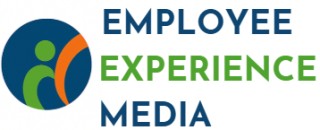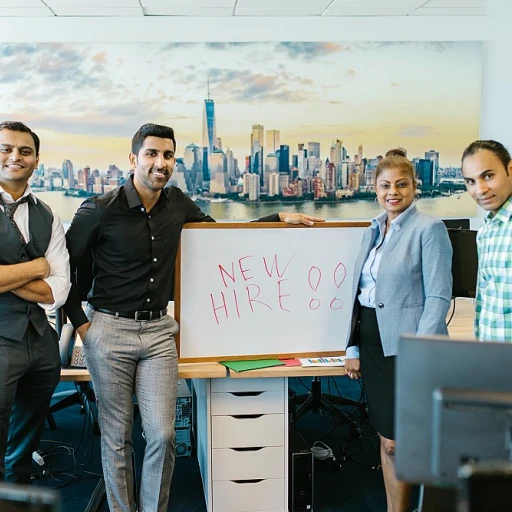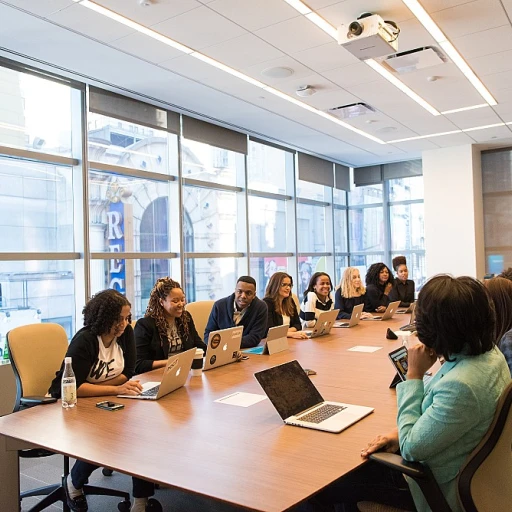
Understanding Employee Needs
Identifying the Core Needs of Your Workforce
Understanding the specific requirements of employees is crucial to crafting a website design that truly resonates and meets their needs. A company intranet serves as more than just a digital workspace; it's a vital tool that connects team members, shares news, and broadcasts company values. To create an effective employee portal or intranet homepage, identifying what employees need from this platform is the first step. Considerations should start with the team members who use the web platform daily. It involves honing in on the practical needs of employees, such as easy access to core content and digital resources. Ask questions: What are the frequent tasks of your team that a well-designed intranet could support? How important are seamless communication channels within your company? Are employees looking for a space to engage socially, akin to social media, yet in a professional context? Moreover, understanding employee needs also means delving into individual roles within the team. For some, the intranet may primarily serve as a central information point, with a homepage template that helps them efficiently locate necessary documents or key updates. For others, it may be an avenue to foster a sense of belonging by celebrating achievements and milestones. Looking at website examples from peer organizations can offer insights into best practices that work particularly well in similar contexts. Also, it’s prudent to explore the broader aspects of employee experience and digital workplace design. For instance, evolving your web design approach with a focus on user experience ensures the platform’s utility aligns with employee expectations. Embracing tools such as drag and drop features or website builders like SharePoint can address diverse user requirements efficiently. From defining clear goals to outlining specific functionalities, engaging team members to voice their opinions can be incredibly beneficial. Inviting feedback on existing web design or desired features not only helps in refining the intranet design but also fosters a culture of inclusivity and innovation in your workplace. For a deeper understanding of how to navigate and implement workplace solutions in design, feel free to explore further exploring career insights in workplace solutions. These insights enable companies to build a comprehensive digital landscape that not only meets current needs but scales with future demands as well.Design Principles for Employee Websites
Prioritizing User-Centered Design
Creating a successful employee website involves implementing a design strategy that puts employees' needs at the forefront. Instead of merely replicating a traditional company website, think of your employee-focused platform as a unique friendship between technology and team members. From an intranet homepage to specific sections dedicated to meet the team, each part of the site should enhance user experience and make daily tasks convenient. A user-centered approach begins with recognizing the core values of the organization and ensuring they resonate throughout the digital workplace. This involves understanding and anticipating the routines and needs of your employees so that they can easily find relevant content, whether it's company news or essential resources. One effective technique is to incorporate intuitive navigation and search functions. Your intranet should be structured so team members can quickly locate information without unnecessary clicks. Consider using website builders or drag-and-drop features that allow flexibility and adaptability in design. Another great approach is utilizing web design tools that support a dynamic template. Templates not only save time but also maintain consistency throughout the digital platform. Whether you are using SharePoint intranet or another solution, adapting these templates to fit your unique company culture will create an engaging environment for employees. Maintaining a visually appealing site can significantly boost morale and encourage frequent employee visits. Integrating elements from social media platforms, such as news feeds or interactive dashboards, can enhance web design by keeping the content fresh and engaging. Also, showcasing team members and celebrating their achievements can foster a sense of community and belonging. For more insights on designing effective intranet environments, take a look at exploring the top workspaces in South Tampa, where employee-driven design principles are put into practice. These practices aim to create appealing, efficient, and purposeful employee portals tailored to meet distinct organizational goals.Incorporating Feedback Mechanisms
Gathering Insights from Your Team
Incorporating feedback mechanisms into your employee website design is crucial for creating a digital workplace that truly meets the needs of your team members. Understanding the preferences and challenges faced by employees can significantly enhance the user experience and ensure that the site remains relevant and useful over time.
Utilizing Surveys and Polls
One effective way to gather feedback is through surveys and polls. These tools can be integrated into the intranet homepage or other sections of the site to collect insights on various aspects of the employee portal. Regularly updating these surveys will help keep the content fresh and engaging, encouraging employees to participate and share their thoughts.
Encouraging Open Communication
Creating channels for open communication is another essential aspect of feedback mechanisms. This can be achieved through forums or comment sections where employees can discuss topics, share ideas, and provide suggestions. Such interactive features not only enhance engagement but also foster a sense of community within the company.
Analyzing Feedback for Continuous Improvement
Once feedback is collected, it is vital to analyze the data to identify trends and areas for improvement. This process can be facilitated by using digital tools that aggregate and visualize feedback, making it easier to pinpoint specific issues or opportunities for enhancement. By continuously refining the intranet design based on employee input, companies can ensure that their website remains a valuable resource.
For more insights on how to effectively manage employee feedback and improve your digital workplace, consider exploring this comprehensive guide.
Enhancing Engagement Through Interactive Features
Interactive Features to Boost Engagement
Employee engagement is the heartbeat of any successful company. Designing an employee portal that captivates its users not only enhances the employee experience but also ensures consistent productivity and satisfaction. In our digital workplace, the inclusion of interactive features stands out as a pivotal aspect to create lasting engagement.- Personalized Intranet Homepage: One size does not fit all. Employees should be met with an intranet homepage that reflects their unique interests and roles within the company. This can be achieved through customizable templates and tailoring the content to include relevant news, updates, and tasks. A site with personalized elements encourages team members to visit more frequently, thus fostering deeper connection with their digital workplace.
- Integrate Social Media Elements: The incorporation of social media like features on the employee website enhances interaction among team members. The ability to "like," "comment," or even "share" company news seamlessly increases communication and strengthens the internal community.
- Interactive Team Features: Consider creating a "Meet the Team" section where employees can acquaint themselves with other team members. This social element facilitates networking across different sectors and enhances collaboration within the company. Interactive team websites can showcase team successes and core values dynamically, encouraging a more unified workforce.
- Drag-and-Drop Functionalities: Simplifying the web design with intuitive drag-and-drop features for adding and organizing content on the intranet empowers employees to tailor their experience. This user-friendly approach reduces friction and saves time, making web customization accessible even for those without technical skills.
Ensuring Data Security and Privacy
Prioritizing Privacy in Employee Web Spaces
Ensuring the data security and privacy of employees is a non-negotiable aspect when designing an effective company intranet or employee website. In an era where digital workplace solutions are central to business operations, safeguarding sensitive information is paramount. Here’s how you can integrate data security into the framework of your employee web platforms:- Adopt Secure Design Principles: It's vital to integrate security protocols at every stage of website design. Utilizing best practices for web design can significantly reduce vulnerabilities. By following secure design principles, you not only create robust defenses but also instill trust among employees.
- Implement Access Controls: Limiting access to sensitive areas of the intranet homepage through well-defined permissions is crucial. This ensures that team members have access only to the content necessary for their roles, maintaining the integrity of confidential information.
- Use Encrypted Data Transmission: To protect employee data during transit, employ encryption methods across the employee portal. This will help keep communications secure, maintaining privacy as employees interact with the site.
- Regular Security Audits and Updates: Conduct regular audits to identify potential security loopholes. Frequent updates to your site can prevent exploitation by malicious entities. This proactive approach will safeguard the web environment that employees rely on for daily operations.
- Educate Employees on Security Practices: Keeping employees informed about security protocols is key. Regular training will empower them to identify potential threats, enhancing the overall security posture of your website.
Measuring Success and Continuous Improvement
Evaluating Progress and Striving for Excellence
Measuring success in employee website design is crucial for continuous improvement and ensuring alignment with employee needs. After implementing design principles and enhancing functionality, it's essential for companies to establish metrics that track how well the site meets its objectives. In the realm of digital workplaces, successful employee portals don't happen overnight. They necessitate regular assessments and refinements to maintain usability and relevance. Here's how organizations can effectively measure success:- Set Clear Goals: Clearly defining what success looks like at both the company level and for individual employees helps in tracking performance effectively. Goals could include improving user engagement or ensuring seamless access to team resources.
- Analyze User Interaction: By closely examining user behavior on the intranet, such as visiting the homepage, interacting with team member profiles, and engaging with news content, insights can be garnered on content effectiveness and user engagement.
- Solicit Regular Feedback: Encouraging employees to provide feedback offers firsthand insights into their user experience. This can be done via surveys, focus groups, or direct digital feedback mechanisms integrated into the intranet homepage.
- Monitor Traffic and Usage Patterns: Leveraging analytics tools to track how employees navigate the site can illuminate strengths and weaknesses in your design. High traffic areas versus seldom-visited pages highlight where content might need to be adjusted.
- Benchmark Against Best Practices: Regularly compare your site design and content against top website examples and leading intranet designs to ensure it remains competitive and effective.
- Encourage Continuous Improvement: Place value on the evolution of the site by iteratively refining features, updating the intranet design template, and promoting new digital tools to enhance the user experience.













